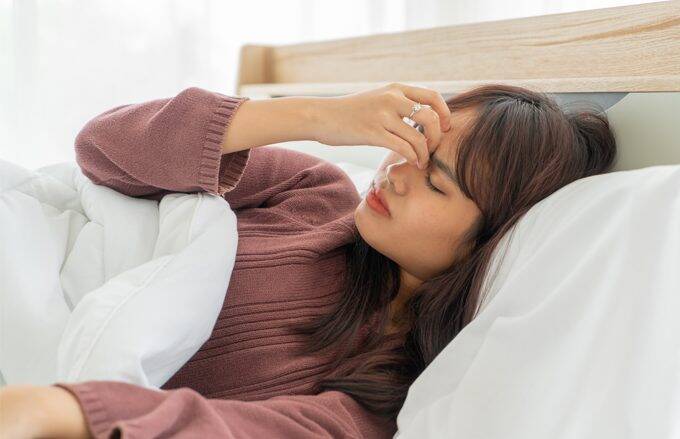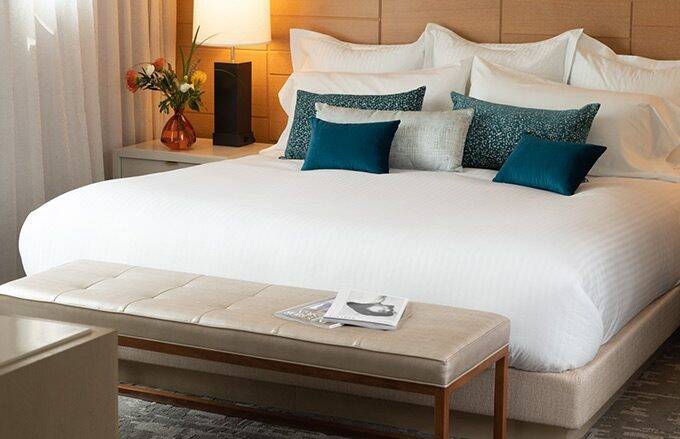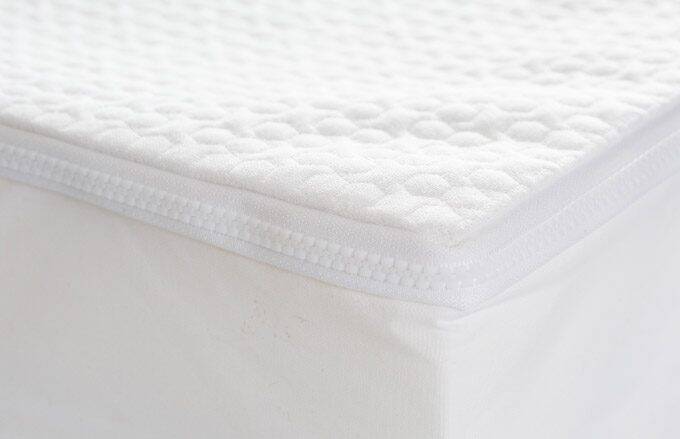June 10, 2020
Keeping Pillows Clean for Your Guests

The hospitality industry is laser-focused on all the cleaning processes that transpire each day in their hotels. There has always been a commitment to deliver a clean, safe room to each guest who stays in the hotel, but with today’s newly heightened awareness of cleanliness, every step in the room cleaning process is under scrutiny.
At Standard Textile, our team has received many questions about how to manage cleanliness of the bed and top of bed components. Ensuring a clean environment for each new guest is critical. Any item that is “reused” in a hotel must be clean prior to use by a new guest. While this is a long-standing requirement, the traveling public as well as local, state and federal health agencies are asking more questions about specific procedures.
Typical Laundering Cycles for Hotel Bedding
Common industry practice states that sheets, pillowcases, and towels are processed and laundered between each guest stay. Items not directly coming in contact with guests, such as pillows, blankets, duvet inserts, and mattress pads, are typically cleaned/laundered on a “cyclical” basis (e.g. monthly, quarterly, biannually). As the hospitality industry moves toward its “new normal” there are questions about how to ensure that items that are laundered on a cyclical basis are safe and clean for each new guest. Let’s look at one of these: the pillow!
Pillow Laundering & Cleanliness
In the hospitality market, pillow types fall into two broad categories – natural fill or synthetic fill. As the name implies, a natural fill pillow is a blend of feather and goose or duck down, and a synthetic pillow is filled with manmade fibers or clusters of polyester or other manmade fibers. Neither is designed to withstand the volume of washings it would take to attempt to wash after each guest stay. The expense and time would be far too great, the product life severely shortened, and it could create an operational nightmare for hotels.
Since pillows are not laundered between each guest stay, how should hotels protect the pillow from passing anything to a new guest, as well as ensure the new guest has a clean, sanitized pillow? Most hotels currently protect the pillow with two coverings: 1) a pillow cover 2) a pillowcase. The pillowcase serves as the primary pillow protection and is changed between each guest. The secondary barrier is the pillow protector which is changed when visibly soiled or on a “cyclical” timeframe (typically monthly or quarterly). Additionally, there is a cloth covering or “ticking” on the pillow itself. Previously, this has worked well and provided a sufficiently clean environment.
Advanced Hotel Pillow Protection
In this new environment and with the concern of spreading COVID-19, how do we revise our process to raise the level of protection? The good news is that preliminary research suggests that the virus “does not survive well” on fabric or “soft surfaces.” The wash process (at sufficiently high water temperatures) inherently sanitizes the pillowcase – hotels are good to go with their current process. The opportunity to take a step up for clean pillows is the second barrier: the pillow cover.
Historically, the pillow covers many hotels choose do not provide protection from moisture. In other words, liquids—spills, sweat, etc.—can penetrate the fabric and enter the pillow. Spills or other fluids penetrating pillows could lead to bacteria or mold growth or other contamination. Large spills are obvious. A simple change-out of the pillow resolves that problem. In today’s environment, we are concerned with preventing smaller amounts of moisture from penetrating the different layers of fabric, then making sure housekeeping removes the soiled linens during the room cleaning process.
Virus Blocking & Antimicrobial Pillow Protection
Instead of a pillow cover, a pillow protector with virus blocking and antimicrobial properties, offers an ideal solution. With moisture barrier inherent in the fabric, the pillow never encounters any liquid—a win on many levels. Any moisture that gets through the pillowcase, the virus blocking and antimicrobial properties of the encasement inhibit any virus from penetrating the fabric or bacteria from surviving. And, of course, pillow protectors must be able to withstand the regular rigors of laundering.
AllerEase® Professional for Standard Textile offers three pillow protector options for hoteliers to extend the life and cleanliness of their pillows. The antimicrobial fabric utilized in AllerEase® Professional Pillow Protectors helps reduce the occurrence of bacteria, mold, and mildew— protecting your pillow investment. Offering not only bacteria blocking capabilities, AllerEase’s antimicrobial barrier actually inhibits growth of microbes. To ensure your guests are aware of the benefits of AllerEase® Pillow Protection (mattress encasements, too!), we provide our customers informational tent cards to place in your rooms.
And if the pillow is washed regularly, guests will sleep soundly knowing they’re laying their head upon a properly sanitized pillow.
Related Content

Avoiding the Headache of Allergens During the Time of COVID-19
As travel rebounds and hotel occupancy increases, the potential exposure to environmental allergens could cause concerning symptoms to travelers. Consider AllerEase mattress and pillow protection to reduce the build-up of allergens, including dust mites, mold, dander, and more.

Top 5 Articles on Hotel Mattress & Pillow Cleanliness During COVID-19
As hotels have overhauled their cleaning procedures in 2020, many have realized the critical need for mattress and pillow protection. Based on your feedback, here are the top 5 articles most useful articles of 2020.

Three Ways the AllerEase® Duraflex™ System Differs from Other Mattress Encasements
AllerEase® Duraflex™ System with Zip-off Top protects one of your hotel’s most valuable assets—your beds. See how this time, cost, and energy saving encasement system differs from other encasements, and has revolutionized the encasement installation and changing process.